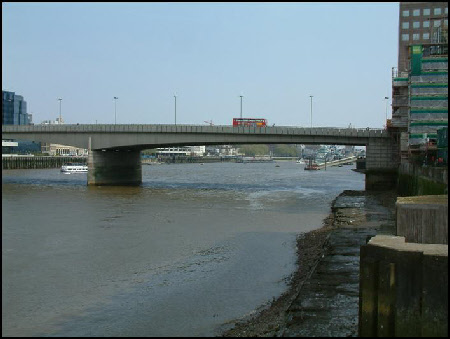From Holborn Circus you can walk, in an hour, to and from each of five of London’s bridges across the Thames – Waterloo, Blackfriars, The Millenium Bridge, Southwark and London Bridge. Of them all, London Bridge is the oldest and the most famous.
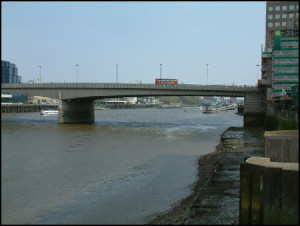
London Bridge
If you walk across London Bridge from the City side, and then down the steps on the western side (your right) of the south end of the bridge, you will see the Mudlark pub in front of you. Turn around and you will see that the steps you descended are called Nancy’s Steps, because this is where poor Nancy was murdered by Bill Sykes in “Oliver Twist”. Now walk to your left under the bridge and you will see two set of twin rails buried in the road that tell you where the old London Bridge, and the 1831 John Rennie-built London Bridge, used to sit. If you turn round now and walk past the Mudlark there is a little park on your right which has the last stones left in London of Rennie’s bridge.
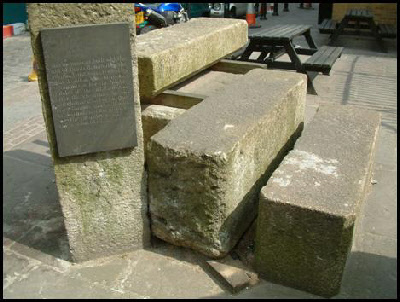
The last surviving stones of the 1831 London Bridge.
On one of those stones is a stainless steel sheet (below) with an etching of the changing profile of London Bridge through all of its last 1000 years.
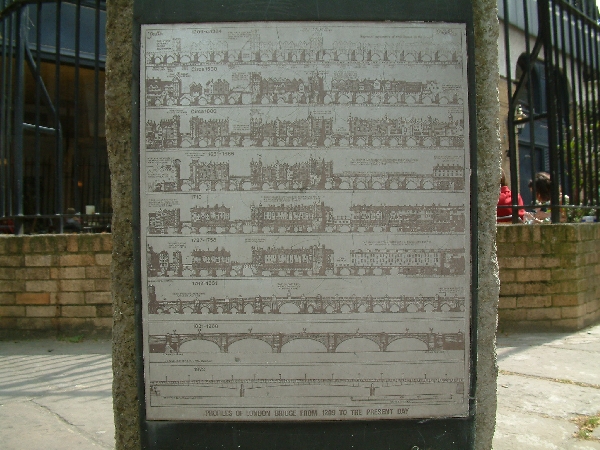
Evolution of London Bridge.
You will be familiar with the sight of drawings of London Bridge showing heads stuck on long wooden poles. This was Drawbridge Gate, and Sir Thomas More (the Man for All Seasons) was one of the first to be treated in this way after his execution by Henry VIII.
The stretch of the Thames from London Bridge downstream to Tower Bridge is called the Pool of London. The Customs House, Old Billingsgate Market, the Tower, St Katherine’s Dock, all show that this is part of the historic and financial heart of London.
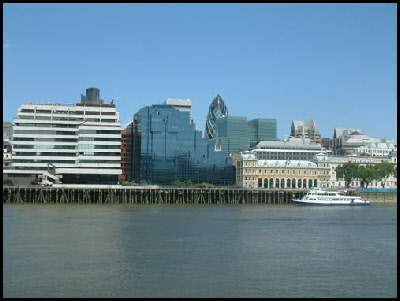
View across the Thames to the City of London.
The Romans built the first London Bridge across a wide, shallow river with large swamps on the south bank. It was on their main road from Dover to Chester, through Canterbury and St Albans, often referred to as Watling Street and if you are driving along the A5, then you are following that Roman road. The Roman bridge, and the Saxon bridge after it, was wooden and vulnerable to floods and fire. A stone bridge was built in the 1100s and this 600-year old bridge was finally replaced by the bridge Rennie built in 1831. The bridge you see now, 1960s modern, low-slung and looking as though it was lowered from a helicopter in 5 pieces, replaces the 1831 bridge and it was that bridge which was transported, stone by numbered stone, to Arizona – minus the five stones you can see above.
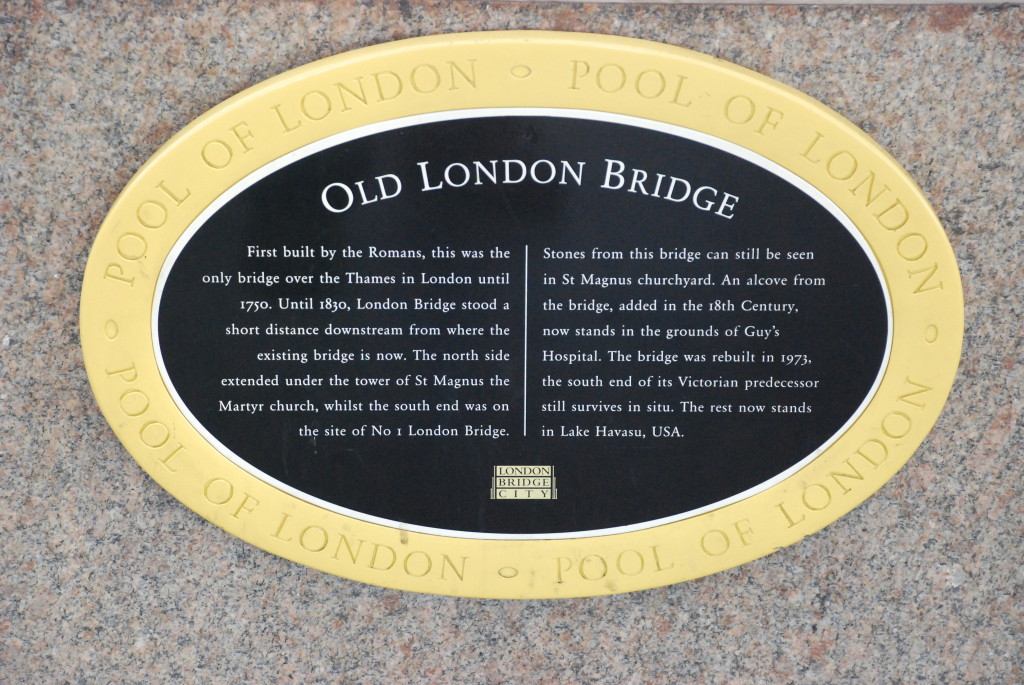
Story of the Old (1831) London Bridge.
